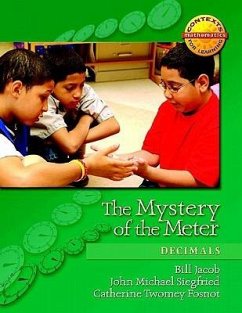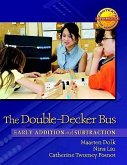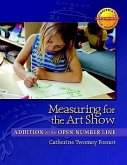The Mystery of the Meters: Decimals is one of five units in the Contexts for Learning Mathematics Investigating Fractions, Decimals, and Percents (46) This unit begins with the story of Zigwho discovers five mysterious dials on the side of his house. The dials are part of the electric meter for his house. At first Zig does not know this and he sets out to investigate how the dials work. As he collects data (readings every ten minutes), he notices that the hands on the dials turn in relation to each other (since each dial represents a different power of ten). Using Zigs data, students investigate how the dials are related. As the unit progresses, students use readings from the meter to measure energy to the thousandth of a kilowatt-hour to calculate the amount of energy used during a specific time period, and to determine readings on missing or obscured dials, working with place value equivalents. The unit focus is on decimals, and since the electric meter in this unit represents kilowatt-hours to the thousandths, it can be used as a model to represent decimals. Because students can see how the numbers expressed as decimals increase with time, the meter is a powerful tool for students to use to determine equivalents and to examine how decimals increase and are ordered. The electric meter consists of five circular dials numbered zero through nine that are lined up in place value order. As the hand on each dial makes a complete revolution, the number indicated on the dial to its left increases by one (one-tenth of a revolution.) This model was chosen because the position of the dials supports understanding of place value with decimals in tenths, hundredths, and thousandths. In examining how the hands on the dials move as the values increase, students may have opportunities to confront basic cognitive obstacles in making sense of decimal representations. These dials advance in the same way that the mechanical odometers of old cars worked, so exploring this mechanism provides an experience that students dont get these days due to the use of electronic digital odometers. The electric meter used in this unit measures thousandths of a kilowatt-hour (or watt-hours), while the meters in most homes measure kilowatt-hours. This change was made to enable students to interpret the action of the meter in operating everyday electric devices, such as a refrigerator, light bulb, or television. When students go home and look at their meters, they may discover this as well as other similarities and differences. You can explain that in the story the meter is different, and you can invite students to think about the relationship of the problems in this unit to the meter they have at home. To learn more visit http: //www.contextsforlearning.com








